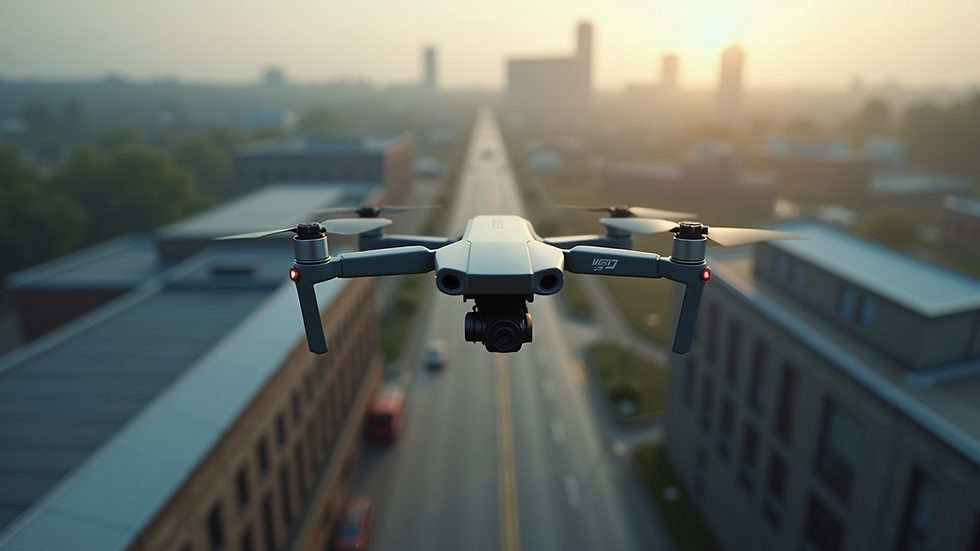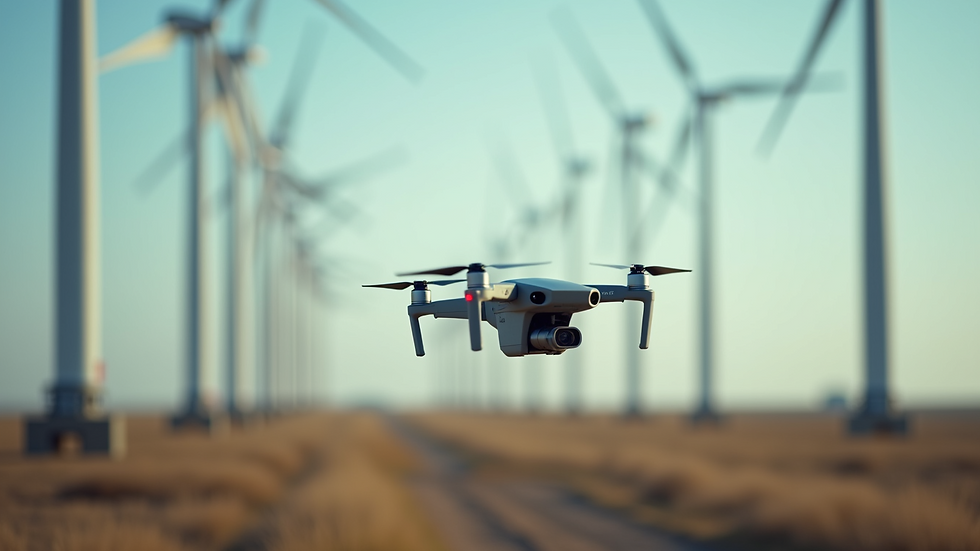Enhance Efficiency with Aerial Inspection Services
- Gareth Smith
- Jul 14
- 4 min read
In the modern world, businesses continually strive for efficiency and accuracy in their operations. One way to achieve this is through the use of aerial inspection services. These services utilize drone technology to provide high-quality inspections of various infrastructures, such as roofs, bridges, and power lines. This blog post dissects how drone-based survey services can enhance your business's efficiency and offers insights into implementing these services effectively.
Understanding Drone-Based Survey Services
Drone-based survey services involve the use of unmanned aerial vehicles (UAVs) equipped with advanced cameras and sensors to capture real-time data from the sky. This technology has revolutionized how businesses conduct inspections, allowing for rapid data collection and comprehensive analyses that were previously time-consuming and labor-intensive.
Benefits of Using Drones
The advantages of integrating drones into inspection processes are numerous:
Cost-Effectiveness: Traditional inspections often require scaffolding, ladders, or even helicopters for roof inspections. Drones eliminate the need for these expensive resources, greatly reducing cost.
Time Efficiency: Drones can cover large areas in a fraction of the time it would take human inspectors. For instance, a drone can survey a large roof in 30 minutes, whereas a manual inspection may take several hours.
Improved Safety: Using drones minimizes risk by removing the need for inspectors to climb onto roofs or work in hazardous conditions. This reduces the likelihood of accidents and injuries.

Applications of Drone-Based Survey Services
Drone-based survey services apply to various industries, enhancing the efficiency of tasks across sectors:
Construction and Real Estate
In the construction and real estate industries, drones are used to assess sites, monitor construction progress, and provide aerial views for marketing. For example, a drone can document the building process, allowing project managers to identify discrepancies early.
Agriculture
In agriculture, drones can monitor crop health by providing aerial imagery that reveals plant stress. Farmers can then make data-driven decisions on watering and fertilization. Statistics show that drone technology can increase crop yields by up to 10% by optimizing resource allocation.
Utilities and Energy
Utility companies use drones to inspect power lines, wind turbines, and solar farms. This not only speeds up inspections but also allows for better preventive maintenance, ultimately reducing downtime and increasing productivity. For instance, routine drone inspections can reveal potential issues before they lead to costly outages.

Can I Fly a Drone to Inspect My Roof?
If you’re considering conducting a roof inspection using a drone, there are some important points to consider. First, it’s crucial to comply with local regulations regarding drone usage. Many regions require hobbyist and commercial pilots to register their drones and obtain licenses.
Additionally, it’s wise to hire a professional service that specializes in aerial inspections. They have the necessary equipment, knowledge, and experience to provide reliable data. This also ensures that the inspection adheres to safety protocols.
Getting Started with Aerial Inspections
Implementing drone-based survey services requires careful planning. Here are several steps to help you get started:
1. Identify Your Needs
Begin by assessing your operational needs. Determine which areas, assets, or processes could benefit from aerial inspections. Create a checklist of what you aim to achieve through drone inspections.
2. Choose the Right Service Provider
Research and select a reputable aerial inspection service that meets your specific requirements. Make sure they have a solid track record and understand your industry.
3. Train Your Staff
If your team will be directly involved with drones, consider providing training. Understanding how to interpret data captured by drones can greatly enhance decision-making processes.
4. Integrate Drone Data into Your Operations
Once you start receiving data from your aerial inspections, incorporate it into your existing systems. Utilize software solutions that can analyze this data effectively and present it in a user-friendly format.

Challenges and Considerations
Despite the clear benefits of drone-based survey services, there are challenges that businesses may face:
Regulatory Compliance: Navigating the rules regarding drone usage can be complicated. Ensure your service provider is compliant with all aviation regulations.
Data Management: The large amounts of data collected require effective management strategies. Invest in cloud storage and data analytics tools to handle this information properly.
Weather Dependency: Drone inspections can be affected by poor weather conditions. Have a contingency plan for rescheduling inspections if they cannot be conducted safely.
Key Takeaways for Enhanced Efficiency
In summary, drone-based survey services enhance efficiency by offering cost-effective, safe, and rapid solutions for inspections. While challenges exist, the potential benefits significantly outweigh them. By leveraging drone technology, businesses can optimize operations, improve safety, and make better-informed decisions.
As industries continue to embrace innovative technologies, integrating aerial inspection services into your operations can set you apart from competitors. This forward-thinking approach leads not only to enhanced efficiency but also establishes your business as one that values progress and safety.
Incorporating these advanced techniques will streamline your operational processes, allowing you to focus more on growth and innovation. For more insights on how to integrate drone technologies into your business practices, consider exploring more resources on aerial inspection services.
Now is the time to elevate your operations and embrace the efficiencies offered through drone technology!




Comments